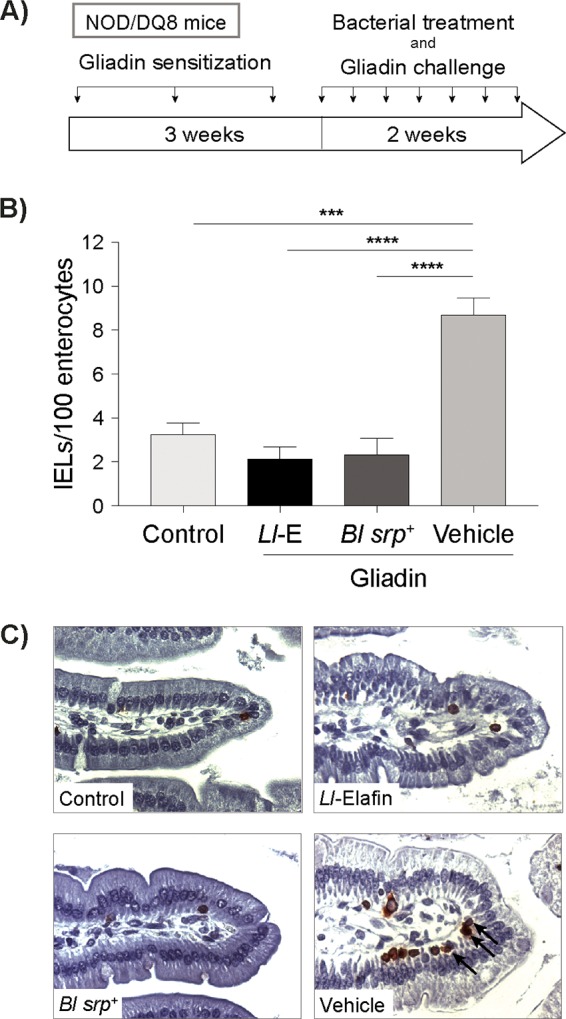FIG 1.

B. longum srp+ and L. lactis-elafin are equally effective in preventing gliadin immunopathology in mice. (A) NOD/DQ8 mice were sensitized with cholera toxin and pepsin-trypsin-digested gliadin 1× per week for 3 weeks. Nonsensitized mice (controls) received cholera toxin alone. Subsequently, mice were treated daily with B. longum srp+, L. lactis-elafin, or PBS–20% glycerol and simultaneously challenged with gliadin 3× per week for 2 weeks. Control mice received no bacterial treatment. (B) CD3+ intraepithelial lymphocytes in small-intestinal villus tips were quantified and expressed as the number of IELs per 100 enterocytes. Mice treated with srp-expressing B. longum srp+ had significantly lower numbers of IELs than gliadin-sensitized mice receiving no bacterial treatment. Further, B. longum srp+ treatment resulted in numbers of IELs similar to those seen with mice treated with L. lactis expressing elafin. ***, P < 0.001; ****, P < 0.0001. (C) Representative images were captured at ×40 magnification. Data are shown as means ± standard errors of the means (SEM). Statistical significance determinations were performed by ANOVA followed by Bonferroni post hoc analysis. Control, nonsensitized, no treatment; Ll-E, gliadin plus L. lactis expressing elafin; Bl srp+, gliadin plus wild-type (WT) B. longum NCC2705; Vehicle, gliadin, no treatment (n = 3 to 6/group).
